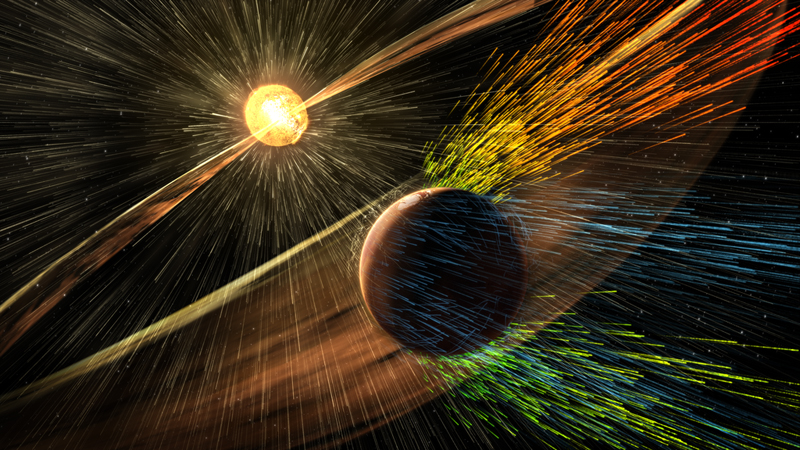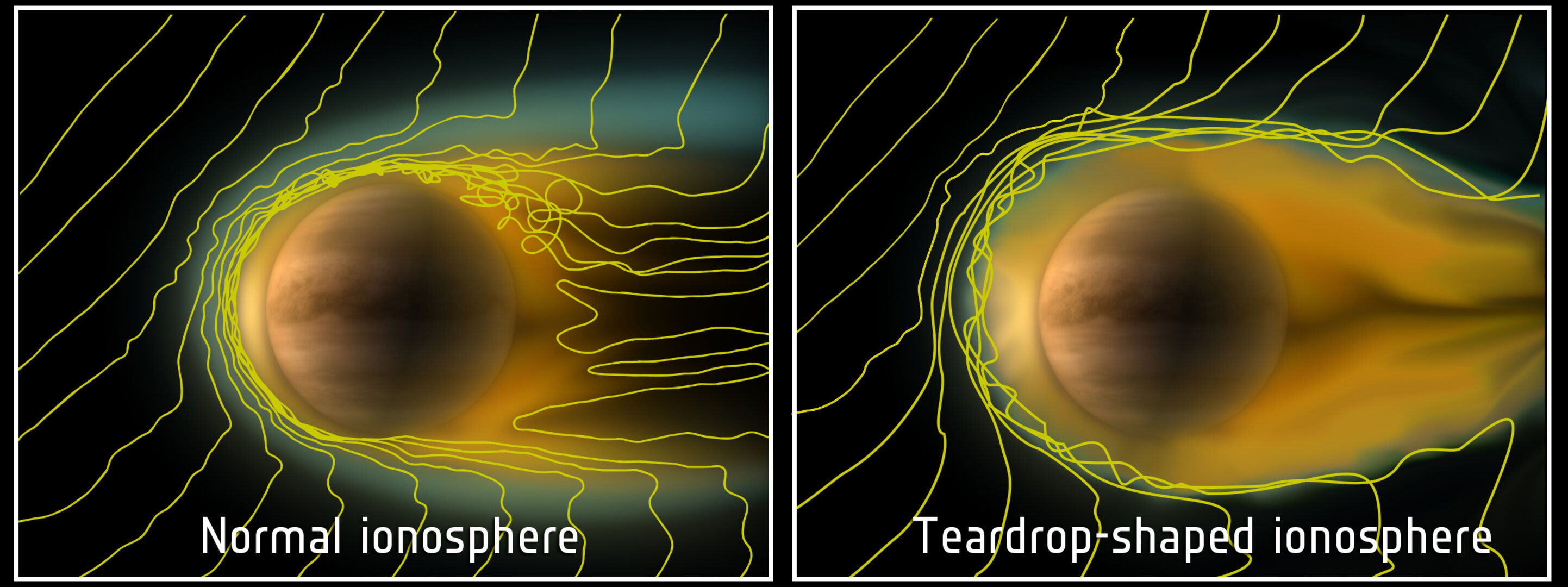https://en.wikipedia.org/wiki/Atmospheric_escape wrote:
<<Atmospheric escape is the loss of planetary atmospheric gases to outer space. A number of different mechanisms can be responsible for atmospheric escape; these processes can be divided into thermal escape, non-thermal (or suprathermal) escape, and impact erosion. The relative importance of each loss process depends on the planet's escape velocity, its atmosphere composition, and its distance from its sun. Escape occurs when molecular kinetic energy overcomes gravitational energy; in other words, a molecule can escape when it is moving faster than the escape velocity of its planet. Categorizing the rate of atmospheric escape in exoplanets is necessary to determining whether an atmosphere persists, and so the exoplanet's habitability and likelihood of life.
..............................................................
Atmospheric escape of hydrogen on Earth is due to Jeans escape (~10 - 40%), charge exchange escape (~ 60 - 90%), and polar wind escape (~ 10 - 15%), currently losing about 3 kg/s of hydrogen. The Earth additionally loses approximately 50 g/s of helium primarily through polar wind escape. Escape of other atmospheric constituents is much smaller. A Japanese research team in 2017 found evidence of a small number of oxygen ions on the moon that came from the Earth. In 1 billion years, the Sun will be 10% brighter than it is now, making it hot enough for Earth to lose enough hydrogen to space to cause it to lose all of its water (See Future of Earth#Loss of oceans).
..............................................................
Recent models indicate that hydrogen escape on Venus is almost entirely due to suprathermal mechanisms, primarily photochemical reactions and charge exchange with the solar wind. Oxygen escape is dominated by charge exchange and sputtering escape. Venus Express measured the effect of coronal mass ejections on the rate of atmospheric escape of Venus, and researchers found a factor of 1.9 increase in escape rate during periods of increased coronal mass ejections compared with calmer space weather.
..............................................................
Primordial Mars also suffered from the cumulative effects of multiple small impact erosion events, and recent observations with MAVEN suggest that 66% of the
36Ar in the Martian atmosphere has been lost over the last 4 billion years due to suprathermal escape, and the amount of CO
2 lost over the same time period is around 0.5 bar or more. The MAVEN mission has also explored the current rate of atmospheric escape of Mars. Jeans escape plays an important role in the continued escape of hydrogen on Mars, contributing to a loss rate that varies between 160 - 1800 g/s. Oxygen loss is dominated by suprathermal methods: photochemical (~ 1300 g/s), charge exchange (~ 130 g/s), and sputtering (~ 80 g/s) escape combine for a total loss rate of ~ 1500 g/s. Other heavy atoms, such as carbon and nitrogen, are primarily lost due to photochemical reactions and interactions with the solar wind.
..............................................................
Saturn's moon Titan and Jupiter's moon Io have atmospheres and are subject to atmospheric loss processes. They have no magnetic fields of their own, but orbit planets with powerful magnetic fields, which protects these moons from the solar wind when its orbit is within the bow shock. However Titan spends roughly half of its transit time outside of the bow-shock, subjected to unimpeded solar winds. The kinetic energy gained from pick-up and sputtering associated with the solar winds increases thermal escape throughout the transit of Titan, causing neutral hydrogen to escape. The escaped hydrogen maintains an orbit following in the wake of Titan, creating a neutral hydrogen torus around Saturn. Io, in its transit around Jupiter, encounters a plasma cloud. Interaction with the plasma cloud induces sputtering, kicking off sodium particles. The interaction produces a stationary banana-shaped charged sodium cloud along a part of the orbit of Io.>>
 Mercury's Sodium Tail
Mercury's Sodium Tail



